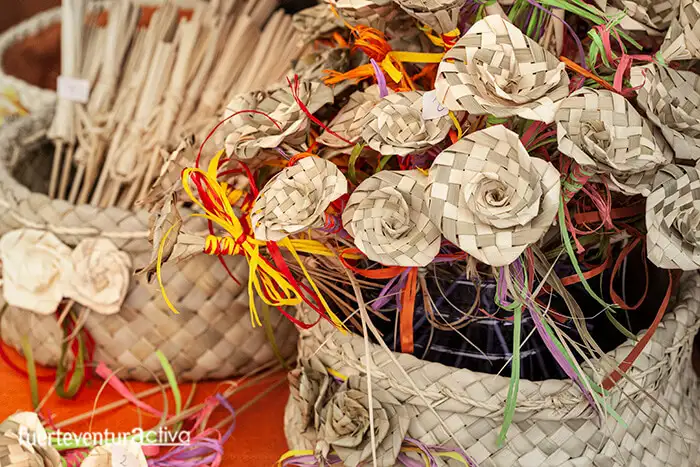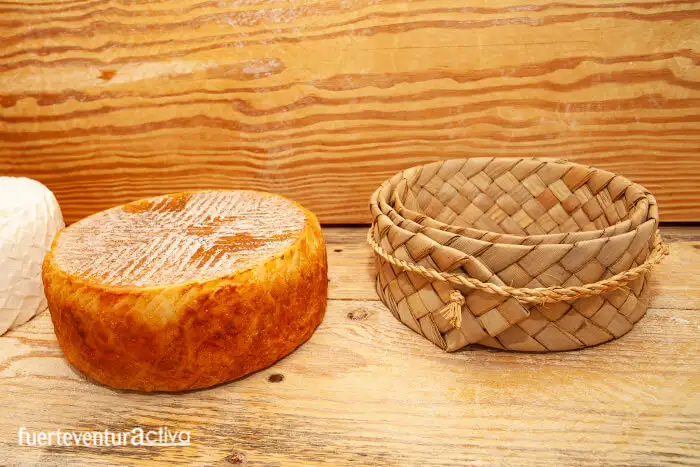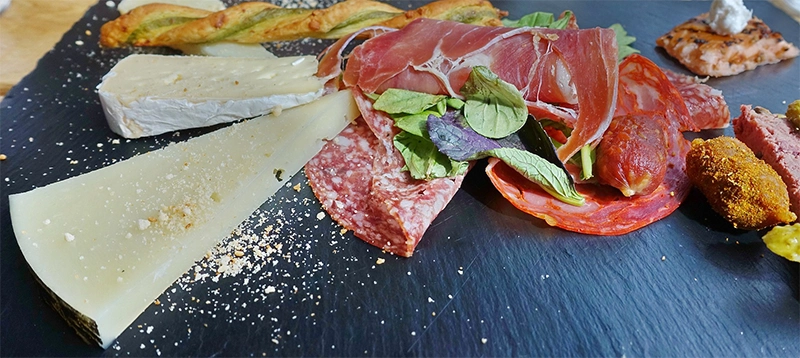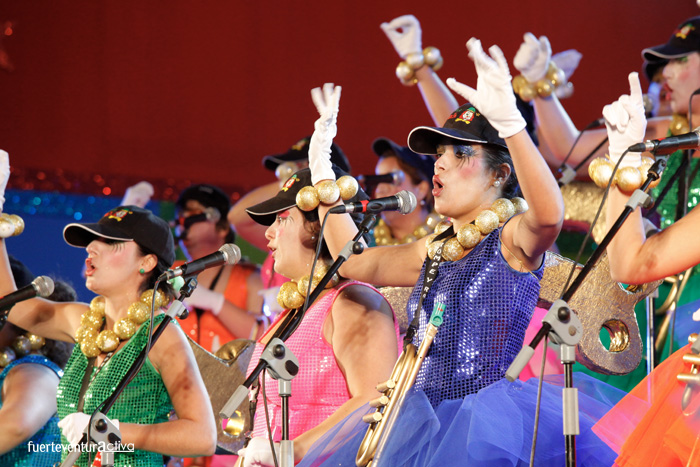
Palm handicrafts in Fuerteventura
The palm work in Fuerteventura is carried out with the Canary Island palm, an endemic species of the archipelago. It is found in all the islands, and can live up to 200 years. It has been abundantly exploited, and cultivated, since ancient times. Although there are currently few palm groves, centuries ago the presence of palm trees on our island was very extensive. Gadifer de la Salle, in the 15th century, was surprised by the number of palm trees that he found in Fuerteventura. This was reflected in the chronicles of the time.And when you pass to the other side, you will find a beautiful and united and very pleasant valley, in which there will be about 800 palm trees that shade the valley, with streams of water that run through the middle, and they are in groups of 100 and 120, so tall as masts more than 20 fathoms high, so green, so bushy and so loaded with dates, that it is a pleasure to look at them.The collection of palm leaves was normally carried out by men. They took both new white leaves, which are located inside the crown of the palm tree, as well as the green leaves, more grown and open. From all of them the pírgano, the palm heart, and the baleo are extracted.
 Oral tradition recommends that the rods be cut on the waning moon. The cleaning and preparation of the different parts of the palm leaf is done with great care and skill, avoiding tearing the skin.
Once the pírgano (central nerve of the palm leaf) and the pinnules are separated, they open one by one, spreading in the sun and the dew of the night, on the ground, or on the roofs of the houses. It is necessary to turn the branches every day so that they acquire a uniform color.
The pírgano was the main element to work basketwork, and to make the frames of the large pieces, especially those of transport.
Oral tradition recommends that the rods be cut on the waning moon. The cleaning and preparation of the different parts of the palm leaf is done with great care and skill, avoiding tearing the skin.
Once the pírgano (central nerve of the palm leaf) and the pinnules are separated, they open one by one, spreading in the sun and the dew of the night, on the ground, or on the roofs of the houses. It is necessary to turn the branches every day so that they acquire a uniform color.
The pírgano was the main element to work basketwork, and to make the frames of the large pieces, especially those of transport.
 With the filiolos, palm strips, mats, saddlebags, hats, brooms and a myriad of bags are manufactured. The weaving of the palm leaves was in the hands of women, who combined agricultural work, ranching and domestic work.
Among the most outstanding objects that the artisans of Fuerteventura made in Palma, we can mention:
With the filiolos, palm strips, mats, saddlebags, hats, brooms and a myriad of bags are manufactured. The weaving of the palm leaves was in the hands of women, who combined agricultural work, ranching and domestic work.
Among the most outstanding objects that the artisans of Fuerteventura made in Palma, we can mention:
- The palm strip or sera: these are the braided palm molds used in the production of Majorero cheese. The estereras work palm hearts with great skill and the knowledge of these tasks passed from mothers to daughters. Learning to make these sera began between the ages of eight and ten.
For its preparation the palm leaves were prepared in thin strips. They were separated into bunches of white palm and green palm, which alternated in the braiding. The leaves, always in odd numbers, were woven diagonally. It was necessary to moisten the palm leaves first to soften them and be able to work them better. They were then sewn to form a piece, using the splinters of the palm as a means of sewing. At one end of the strip a thread is placed to be able to adjust it to the size of the cheese and keep it attached.

- The Mats. They are made with several strips forming a piece of considerable size. They were used to protect the floors of the houses, as carpets in front of the beds, and to preserve some foods such as stale figs, or for the packaging of salted fish.
- Tomizas, they are strings that came from the twisting of two palm strips. They were used for different purposes, especially to tie goats
- Serones, are baskets for the transport of goods. They were adapted to the rump of the animal, forming two baskets, one on each side of the beast. The serones were used to carry fruit, land, or even people.
- Gena or fishing serones, - are containers with a rectangular bottom, with straight walls like a bag and an oval top. They are provided with two handles to hang on the back. They are used to carry fishing tools and fish.



